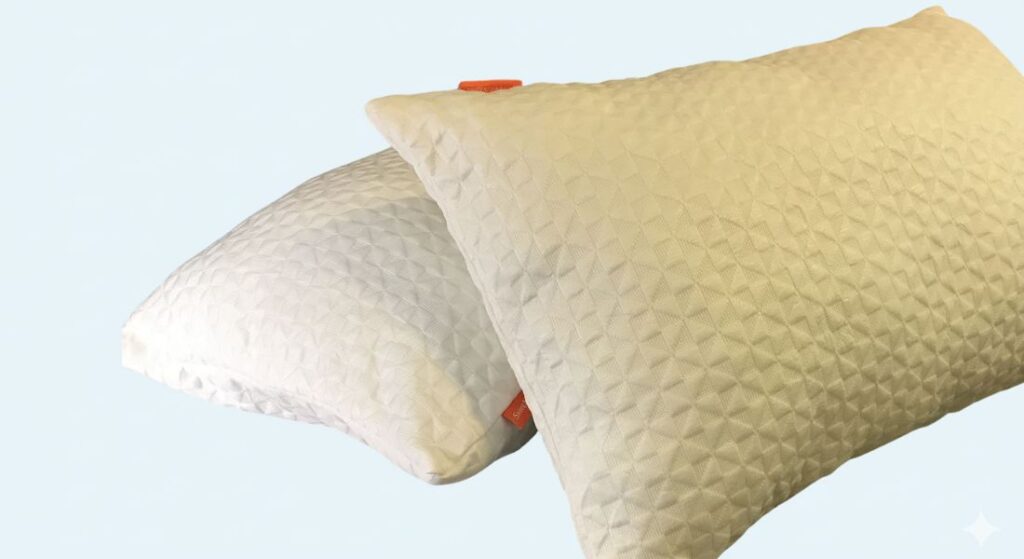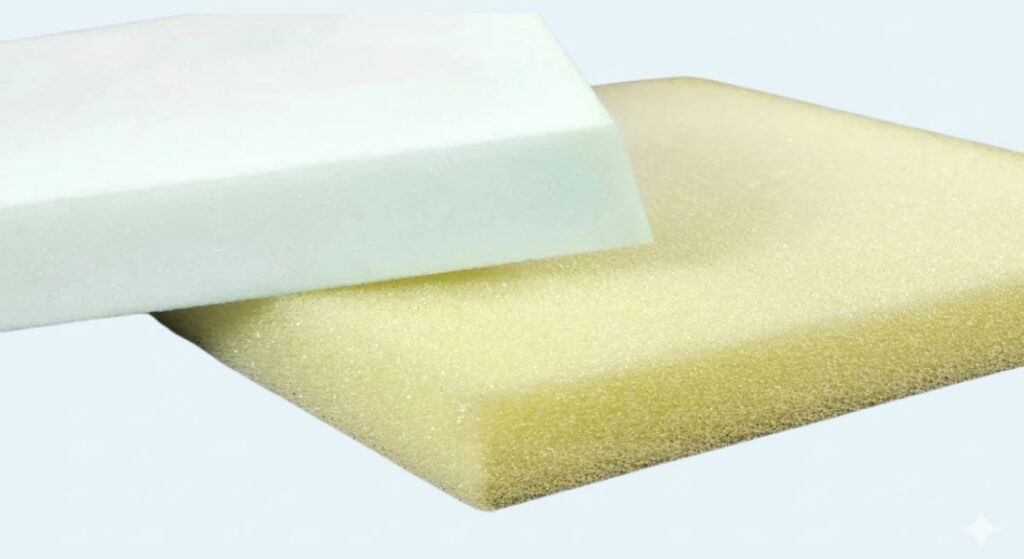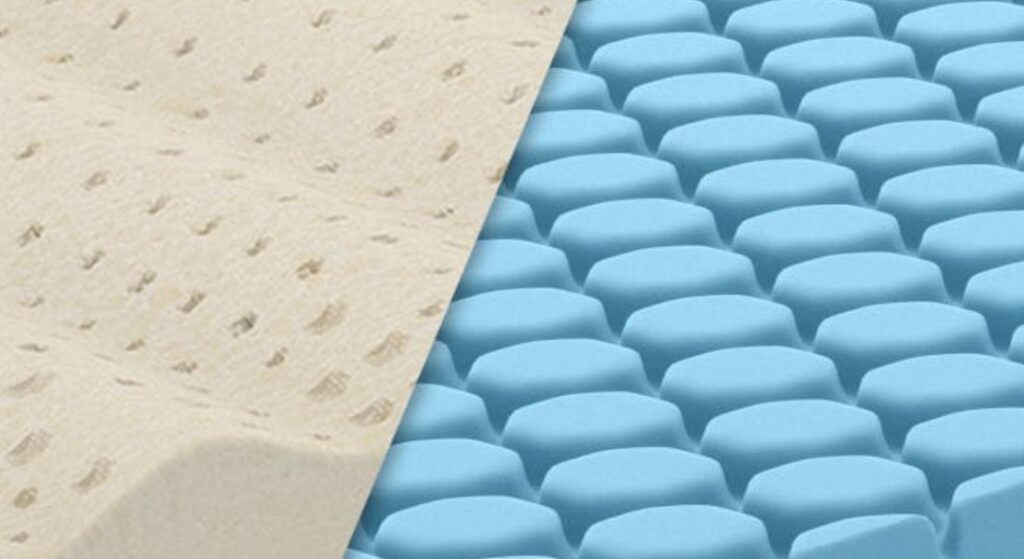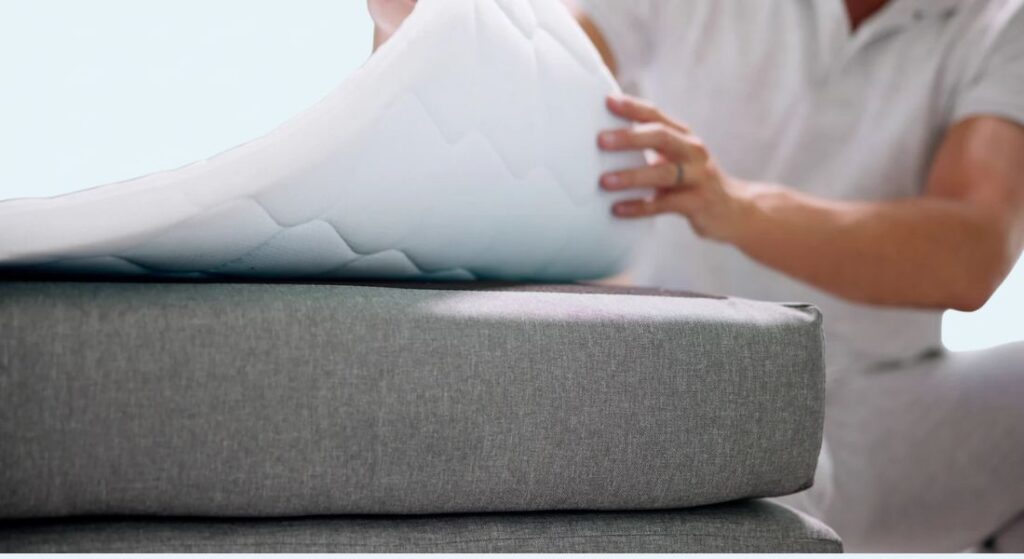That brick-like vacuum-sealed package isn’t your pillow—it’s a compressed promise of cloud-like comfort. If you’ve ever panicked watching your expensive memory foam pillow stubbornly refuse to expand after unboxing, you’re not alone. Most people make critical mistakes during how to inflate memory foam pillow that lock in permanent lumps or void warranties—like blasting it with a hair dryer or skipping daily fluffing. But here’s the good news: With the right techniques, your pillow can reach full, supportive loft in 24–48 hours without damage. This guide reveals exactly how to accelerate expansion safely for solid or shredded foam, avoid manufacturer traps, and maintain that “just-unboxed” feel for years.
Natural Expansion Timeline: How Long Until Full Loft?
Room-temperature expansion (68–78°F) is the safest method, but timing varies wildly based on your environment. At ideal temperatures, expect 24–48 hours for complete recovery as trapped air slowly re-inflates compressed foam cells. Cool rooms below 68°F can double this wait to 48–72 hours since cold slows cellular rebound. Conversely, a warm 78–85°F space safely cuts expansion to 12–24 hours by energizing foam molecules. Never force faster results—rushing risks melting the foam’s open-cell structure. Track your progress using this real-world timeline:
| Condition | Expansion Time | Critical Notes |
|---|---|---|
| Room-temperature (68–78 °F) | 24–48 h | Baseline for warranty compliance |
| Cool room (< 68 °F) | 48–72 h | Avoid heaters—uneven warmth creates weak spots |
| Warm room (78–85 °F) | 12–24 h | Max safe acceleration; use thermostat control |
Why Your Pillow Stays Flat Longer Than Promised
Manufacturers often advertise “expands in 4 hours!”—but this assumes perfect 80°F conditions with constant fluffing. Real-world factors like high humidity or residual factory compression chemicals can add 12+ hours. If your pillow hasn’t reached 90% loft after 48 hours in a 75°F room, skip heat methods and intensify manual fluffing before suspecting defects.
Unpacking and Initial Setup: Critical First Steps
Immediate Unboxing Protocol
Leave that pillow sealed for more than 48 hours and you risk permanent density loss. Tear open the vacuum bag the moment it arrives—never store it compressed. Within seconds of exposure, begin inspecting for:
– Visible tears or uneven seams (common at folded edges)
– Strong chemical odors beyond mild “new foam” scent
– Rock-hard corners that won’t yield to finger pressure
These defects must be documented before expansion begins; most warranties deny claims once foam fully recovers. Place your pillow on a flat, clean surface immediately—avoid carpets or rugs that trap moisture. Ideal humidity is 40–60%; basement storage or rainy climates require a dehumidifier nearby.
Avoid This Deadly Setup Mistake
Placing your pillow directly on wood or tile creates cold spots that slow expansion. Instead, lay it on a breathable cotton towel over a wire rack. This lifts it off cold surfaces while allowing 360° airflow—cutting expansion time by 15%. Keep pets and kids away; even light pressure on half-expanded foam creates permanent impressions.
Safe Heat Methods to Accelerate Memory Foam Pillow Expansion

Three Approved Heat Techniques (With Exact Settings)
Warm Room Acceleration
Set thermostat to 78°F for 6–8 hours. Place pillow 3+ feet from space heaters—never drape it over radiators. Foam surface must stay below 100°F; use an infrared thermometer to check. This method safely cuts expansion time by 30% without warranty risks.
Indirect Sunlight Reanimation
On cloudy days, position pillow near a window with sheer curtains for 2–3 hours. Rotate it every 30 minutes to prevent UV degradation on gel-infused models. Critical: Foam surface must feel warm but not hot to the touch—above 100°F melts cell walls.
Body-Heat Activation
Lie on the pillow for 5 minutes, then remove weight for 25 minutes. Repeat 3–4 times. Your body heat (90–95°F) gently warms core foam without hotspots. Never use heating pads—direct contact exceeds safe temperatures in minutes.
Hair Dryer Emergency Protocol
Only attempt if pillow remains rock-hard after 36 hours. Use lowest heat setting, hold nozzle 12+ inches away, and constantly move in circular motions for 5-minute bursts. Stop immediately if foam feels warm. One overheating incident can cause irreversible melting—visible as shiny, stiff patches.
Step-by-Step Manual Fluffing for Lump-Free Loft
The 4-Minute Fluff Sequence (Repeat Every 2 Hours)
- Short-End Compression: Hold pillow ends, rapidly squeeze-release for 30 seconds—releases trapped air pockets.
- 90° Rotation & Repeat: Flip to long sides, compress for another 30 seconds to even out density.
- Center-Out Kneading: Press firmly from middle toward edges with palms, focusing on flat zones.
- Slap-and-Shake Finish: Vigorously shake pillow while lightly slapping sides to redistribute shredded foam.
Pro Tip: Place tennis balls inside a pillowcase over the foam during shaking—they agitate stubborn clusters without damaging fibers.
Fan Boost for 20% Faster Expansion
Position an oscillating fan 3–4 feet away on medium speed. Elevate pillow on a wire rack so air circulates underneath. Run continuously during active expansion—this evaporates off-gassing chemicals while speeding cellular recovery. Warning: High-speed settings dry out foam, causing premature cracking.
Daily Fluffing Routine to Maintain Your Pillow’s Support
The Maintenance Schedule That Prevents Flatness
- Every Morning: 30-second grab-and-squeeze cycle restores neck support after sleep compression.
- Weekly: Full 3-minute kneading session eliminates body impressions—press foam toward edges to redistribute material.
- Monthly: 1-hour indirect sunlight airing outside (not through glass) evaporates moisture and neutralizes odors.
Cleaning Without Collapse
Spot-clean stains immediately with a cloth dipped in 1 tsp mild detergent + 2 cups water. Never soak—memory foam retains water, causing mildew. For odors, sprinkle baking soda, wait 3 hours, then vacuum with upholstery attachment. Always air-dry flat for 24+ hours before reuse.
Troubleshooting Lumps and Odors in 48 Hours

Emergency Fixes for Common Failures
Lumpy after 48 hours? Intensify fluffing: 5-minute kneading session followed by 15-minute air-fluff cycle (tumble dryer on no-heat with 2 tennis balls in socks). Shredded foam responds fastest.
Chemical smell won’t fade? Place pillow near an open window with a fan blowing across it (not directly at it) for 24 hours. Activated carbon pillows need this less—but still require initial airing.
Edges stay flat? Microwave a damp towel for 30 seconds, wring thoroughly, and lay over stubborn corners for 10 minutes. Massage edges immediately afterward while warm.
Pillow-Type Specific Expansion Tips

Solid Block Foam: Zero dryer use. Rely solely on room-temperature expansion + gentle kneading. Aggressive fluffing creates weak spots.
Shredded Foam: Thrives with dryer tumbling (10 minutes, no-heat). Loves vigorous shaking—add wool dryer balls for deeper agitation.
Gel-Infused Models: Limit sun exposure to 20 minutes max. UV rays degrade cooling gel, causing hard spots. Use body-heat activation instead.
Carbon-Infused Foam: Off-gassing smells stronger initially but fades faster. Still requires monthly airing to maintain odor absorption.
Your 48-Hour Memory Foam Pillow Expansion Checklist
Day 1
– [ ] Unpack immediately upon delivery
– [ ] Place on wire rack in 75°F room with fan circulation
– [ ] Perform fluff sequence 3x (morning, noon, evening)
Day 2
– [ ] Verify 100% expansion at all corners—press edges firmly
– [ ] Apply 2-hour indirect sun session if >90% expanded
– [ ] Run shredded foam through 10-minute air-fluff cycle
Ongoing
– [ ] Daily 30-second fluff before bed
– [ ] Monthly outdoor airing in shade
– [ ] Spot-clean spills within 10 minutes
Avoiding Warranty Voidance: Critical Safety Limits
Heat Danger Zone: Foam exceeding 100°F for 15+ minutes suffers irreversible damage. Melting begins at 120°F—visible as stiff, glossy patches. Warranty killers include hair dryers on medium/high settings, heating pads, or direct radiator contact.
Mechanical Damage Triggers: Never stand on your pillow or stack heavy items. Even 50 lbs of pressure creates permanent impressions. Use only hands for fluffing—no feet or furniture.
Off-Gassing Protocol: If sensitive to VOCs, air pillow in garage or balcony for 24–72 hours before bedroom use. Strong smells lasting beyond 72 hours indicate defective foam.
When to Replace Your Memory Foam Pillow
Replace immediately if:
– Loft stays below 70% after full 48-hour routine with fluffing
– Foam crumbles like styrofoam when squeezed
– Chemical odor persists beyond 7 days of airing
– Neck pain returns despite correct height adjustment
Pro Tip: Extend pillow life by rotating it head-to-foot weekly. This distributes wear evenly—especially crucial for side sleepers who create deep shoulder impressions.
Follow this exact protocol, and your memory foam pillow will transform from a brick into cloud-like support within 48 hours—without triggering warranty red flags. Remember: Patience with natural expansion beats risky heat shortcuts, and daily fluffing prevents the #1 cause of premature flatness. Within a week, you’ll wake up to consistent neck alignment and zero morning stiffness. Now go unbox that pillow—you’ve earned your best sleep yet.





